Kullu valley has what it takes to be “Nature’s Paradise”. Think stunning views of the mighty Himalayas, a serene environment, hospitable locals, and delectable cuisines. Add to it numerous temples and hundreds of mythological stories and mysteries echoing in the hills, Kullu is more than just a town. Instead, it is the valley of gods, legends, and endless beauty.
Kullu Valley [HP] | Location, History, Things To Do & Best Places
Important Information About Kullu Valley
| State– | Himachal Pradesh |
| District- | Kullu |
| River- | Beas River and Parvati River |
| Population Centre- | Kullu District |
| Population– | 437,903 (As per 2011 census) |
| Places To Visit In Kullu Valley– | Bijli Mahadev Temple, Raghunath Temple, Great Himalayan National Park, Naggar, Pandoh Dam, Bhrigu Lake, Kheerganga Pass, Bhuntar, Parvati Valley Trek, Manikaran, Malana, Jagannath Devi Temple, Prashar Lake, Shringa Rishi Temple, etc. |
| Places To Stay In Kullu Valley- | Hotel Kullu Valley, Hotel Shoba Royale, Himalayan Kothi Kais, Tree House Cottage, etc. |
| Treks In Kullu Valley– | Indrahar Pass Trek, Hampta Pass, Chanderkhani Pass, Sar Pass Trek, Jalori Pass Trek, etc. |
Location of Kullu Valley
Sitting at 1200 meters height in the Himalayan range, the height of Kullu makes it a vantage point for some panoramic views of the surrounding hills. It’s a part of an extensive open valley stretching from Manali to Large with the majestic Beas traversing between. It lies in the Kullu District of Himachal Pradesh, nestled between Pir Panjal ranges, and Lower Himalayas, and the Greater Himalayan range. The valley is full of deodar and pine forests, adding to its charm.
It is a 2 to 4 km wide valley that stretches 75 kilometers in distance. It houses some of the best tourist spots of Himachal Pradesh, such as Hidimba Temple, Nehru Kund, there is Rohtang Pass at one end and some beautiful treks. This is a perfect place for a family outing, a trip with friends, solo trippers, and honeymooners.
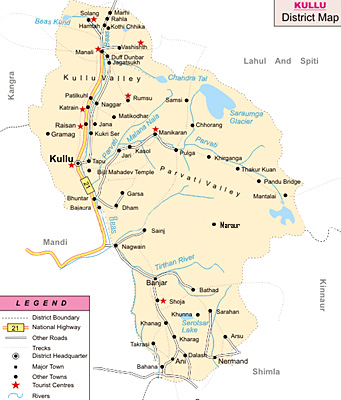
How did the Kullu Valley get its name?
In ancient times, they called it Kulanthpitha, meaning “The End Point of The Inhabitable World”. The name stuck due to the Kullu Manali elevation and inhospitable terrain that made it hard to reach the place in old times. The modern name, Kullu, is borrowed from the Kalut tribe that once inhabited the Beas basin. Before the 1950s, the place hardly had a presence on the tourism map. But with accessibility, the tourists started flooding in.
Mythological History of Kullu
Kullu is an ancient city if the scriptures and early mentions are something to go by. Even the epics, Mahabharata and Ramayana, have a mention of Kulanthpitha.
- In Ramayana, it is considered as the place where humankind flourished first. “Manu”, the ancestor of Lord Ram, and the first man on earth after the great Holocaust, is believed to have rested his boat on the hill in Kullu after the water subsided. He went on to start a new generation of humanity in Manali, which is named after him.
- There is a temple in Nirmand village in Kullu valley, known as the Parshuram temple. Lord Parshuram, the incarnation of Lord Vishnu, is believed to be a former resident of the sacred place.
- As per a popular legend, the deity Malana was crossing the valley carrying a basket featuring gods. But, he stumbled and fell. His basket was split, and the Gods were released. Later, all the gods settled down in the valley. Wherever they settled, the places are commemorated with their temples. That “speaks” for the diversity of gods and temples in this valley in India.
- Let’s revisit Ramayana again for a legend related to Kullu. King Dashratha had conducted a “Putrakameshti Yagna” in anticipation of a son and heir to the throne. It is believed that the yajna was conducted by Shringi Muni in his ashram, located near the present town of Kullu.
- Also, there are tales about Sage Vashishtha, the Kulguru of King Dasaratha and teacher to his sons, including Lord Rama. The Vashishtha Kund is located near Manali, where Vashishtha Muni is said to have his ancient residence. The Vashishtha Kund is said to have been created by Lord Laxman. As Sage Vashishtha used to travel far to the river for a bath, Lord Laxman shot an arrow in the ground, and a hot water spring emerged from the earth to make things easier for the aging saint.
- Satluj is also called Satadree, courtesy of Sage Vashishtha. Sage Vishwamitra killed the sage’s sons for some reason. Grieving, Vashishtha Muni dived in the river Beas with his hands and feet tied to commit suicide. The river didn’t dare to drown a saint, so it freed him and left him ashore. But the grieving sage tried it again, this time in the river Satluj. The river made hundreds of shallow channels to safely place the sage ashore. Thus, Satluj was named Satadree, i.e., the hundred-channeled river.
- Kullu Valley has a deep connection with Mahabharata as well. It is said that Maharishi Vyas had meditated here. Arjun, the third Pandava, is believed to have performed prayers to get hold of the Pashupatastra from Lord Shiva to beat Kauravas. The place is known as the Arjuna Gupha. Hidimba Temple is nestled in the heart of Manali, dedicated to Hidimba, the wife of the second Pandava Bhimsen. He was a mighty man who killed the demon Hidimba and married his sister Hidimba.
It’s understandable for a place as remote as the Kullu valley to have legends, mysteries, and fables. But at the end of the day, they are just stories passed from one generation to the other. Let’s turn the focus towards its modern, documented history.
Modern History Of Kullu Valley
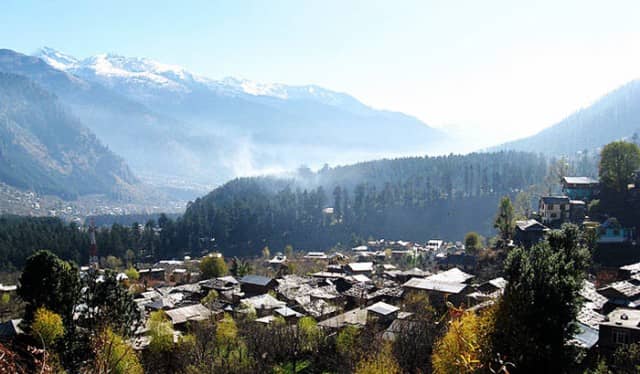
Kullu has thrived under various rulers. The earliest known rulers were the Thakurs. The unhappy subjects overthrew the last of the Thakurs with the help of King Behangamani Pal. He had arrived from Prayag to become the first formal ruler of Kullu in the first A.D. His descendants ruled Kullu until A.D. 1450 with King Kelas Pal being the last ruler of the Pala Dynasty.
Thakurs and Ranas reared their ugly heads once more, and for another 50 years, the Kullu residents suffered at their hands. It was near 1500 A.D. when King Sidh Singh took back the reins of Kullu. As per the folklore, he is also a descendant of Pals who Hidimba Devi blessed to rule Kullu.
Historical documents also indicate the presence of the Raghunath Kingdom in Kullu. It was established by Raja Jagat Singh, a prominent ruler of the Singh dynasty. Twelve generations of the dynasty had ruled the kingdom from the capital Jagatsukh. King Visudh Pal changed it to Nagar, and Raja Jagat Singh shifted it to Sultanpur.
Raja Jagat Singh was the one who named his kingdom after Raghunath, i.e. Lord Ram. He was cursed by a man, Durgadutt, whom the king believed to have some precious pearls. The man set himself and his family ablaze while spelling a curse on the King. The King brought a deity of Lord Raghunath from Ayodhya and placed him on the throne to do away with the curse.
Then the Mughals arrived, and Kullu’s rulership changed hands just too frequently. First, it was the Mughals and then the Sikhs who ruled it in the early 19th century. Later, it was under Britishers who established offices, hospitals, and bungalows in Kullu.
Why is Kullu The Valley Of Gods?
Not just ancient folklore and scriptures talk about Gods in Kullu, but you can also sense the spirituality in Kullu’s cool and unpolluted breeze. Similar to how there is a Shiv temple in each alley of Varanasi, there is a temple in every small and hidden hill of Kullu. If you have the patience and an interest in stories, take a seat by the older men sitting outside their beautiful tiny houses, and you will find there is a new story at every step in Kullu.
Here’re a few must-visit temples in the Kullu valley.
1. Bijli Mahadev Temple, Kullu
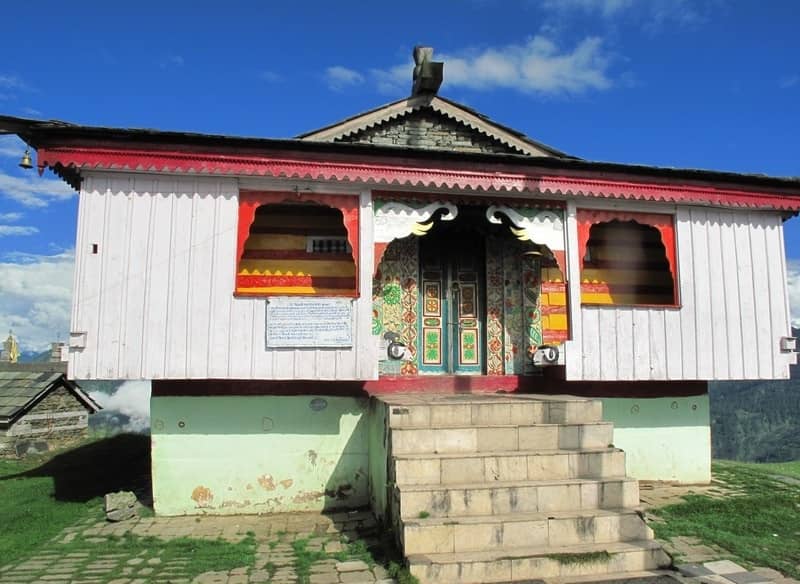
Speaking of popular temples in Kullu valley, the Bijli Mahadev temple is right there at the top of our list. Bijli means lightning. Every year the lightning strikes the temple and shatters the Shivling in the temple. That’s Lord Shiva’s way of taking the punishment for the sins of Kullu residents. The Shivlinga is believed to be restored by the priests of the temple using Ghee (clarified butter) and Sattoo (a powder of wheat, gram, and other grains).
The temple is situated at the Kullu elevation of 2460m above sea level. A 3 km of hostile trek takes you to the temple. However, it’s worth the climb.
2. Hadimba Temple, Manali
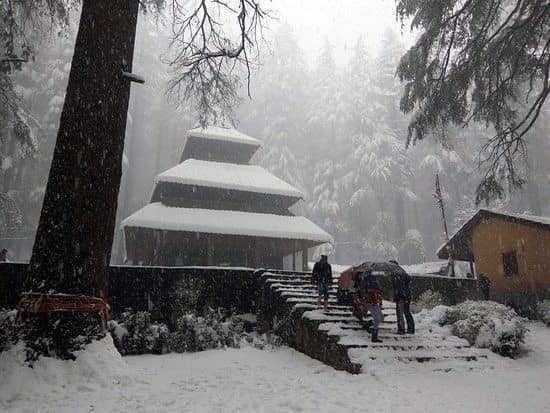
Hidimba Devi was the wife of Pandava Bhimsen and the mother of Ghatotkacha, a mighty demon warrior. She hedges the locals against diseases and calamities. The temple is situated in Manali among thick forests and located around a cave, making it a favorite site for national and international tourists.
The natural beauty of this place is soul-satisfying. Visit it in fine weather, and you will never want to leave it. The temple has been standing proudly for four and a half centuries now and still weaving its magic and blessing visitors coming from the world over.
3. Sayali Mahadev Temple
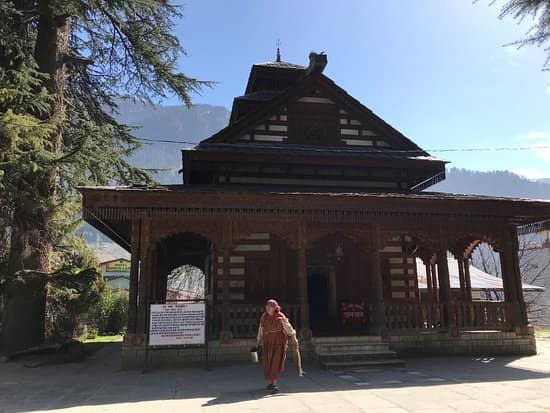
If you are visiting Hadimba Temple, take out some time to visit Sayali Mahadev Temple. It is a small temple just a stone’s throw from the Hadimba Temple. Sayali Mahadev stands out for its unique, intricate architecture that can leave you awe-struck. The walls, ceilings, and pillars are worth a glance. After Raghunath Ji was established in the region, Shaivism and Shaktism prevailed. It indicates why there are so many Shiva temples in Kullu, with Sayali Mahadev Temple being one of them.
4. Vashisht Temple
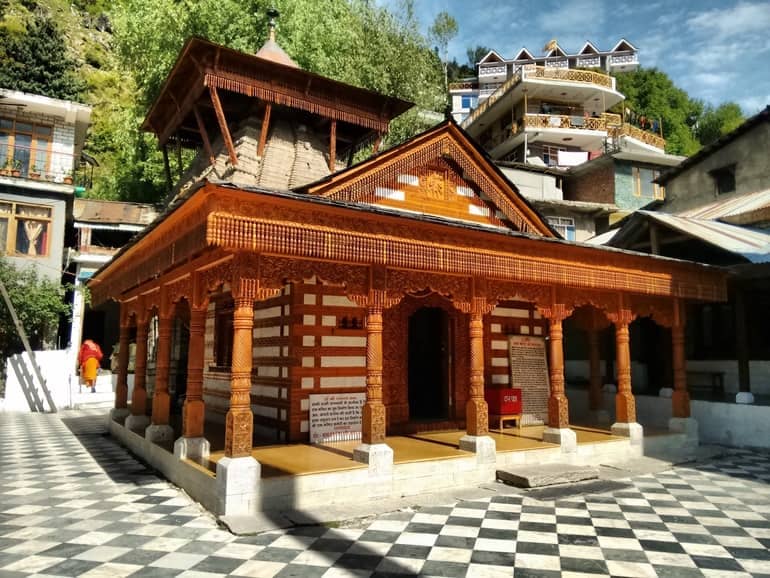
Situated 3 km from Manali, this is a sacred place for devout Hindus. The place, with its hot springs and eye-savoring beauty, attracts a deluge of visitors all year round. Lord Laxman had shot an arrow in the ground and created the spring for his teacher, the holy sage Rishi Vashishtha. The hot water spring is believed to be miraculous, having the power to cure several skin diseases.
Apart from the historical significance, the temple is a naturalist’s delight as well. It is a vantage point for the snow-capped mountains surrounding it. The beauty of the place is far beyond words. Visit it from October- December, and March to July and see for yourself.
5. Vishweshwar Mahadev Temple, Bajaura
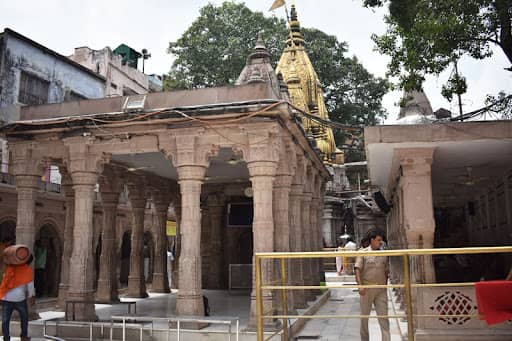
A must-visit for every visitor, this ancient temple in the Kullu valley is said to have been built around the 9th to 12 century A.D. when Pals held sway. The temple is built as per the Panch Dev Puja Procedure of Shankaracharya where five gods are worshipped in the same temple. There is Lord Shiva, Lord Vishnu, Lord Ganesh, Mahishasurmardini (the killer of Demon Mahishasura), Ganga and Yamuna, etc.
The temple is known for its supreme architecture. It is worth talking about. The temple is built in a pyramid style. It is very tall and carved out of stone completely. On the face of the pyramid, you can see a three-faced Shiva carved on it. There is Ganga and Yamuna at the entrance, sitting on their vahanas There is Lord Shiva in the Sanctum sanctorum who is worshipped here as Vishveshwar, i.e., Lord of Universe. There are stone sculptures of deities. There are Lord Ganesha and Lord Vishnu in their usual forms. You see an angry Goddess Durga here, who can be seen killing the demon Mahishasura.
The temple is 15 km from Kullu, the path filled with apple orchards and endless beauty.
Things To Do In Kullu Valley
When you are in Kullu, there are several things to do and have the best time of your life. Include these in your “to-do” list.
1. Sightseeing
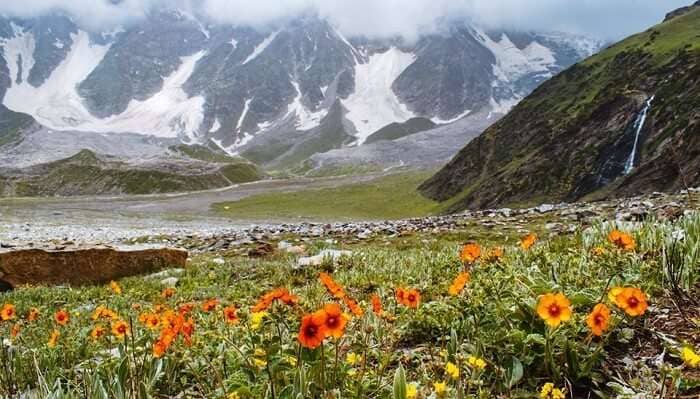
There are several places in Kullu you must visit and take pictures of, such as trek to Parvati Valley, experience Manikaran Hot springs, trek to Chandrakhani Pass and look around beautiful Kullu Valley, visit the temples and feel the peace and serenity, take walks among the forests, and take pictures of the birds and animals, and the best thing is to spend time with the locals and hear the stories about the valley.
2. Trekking
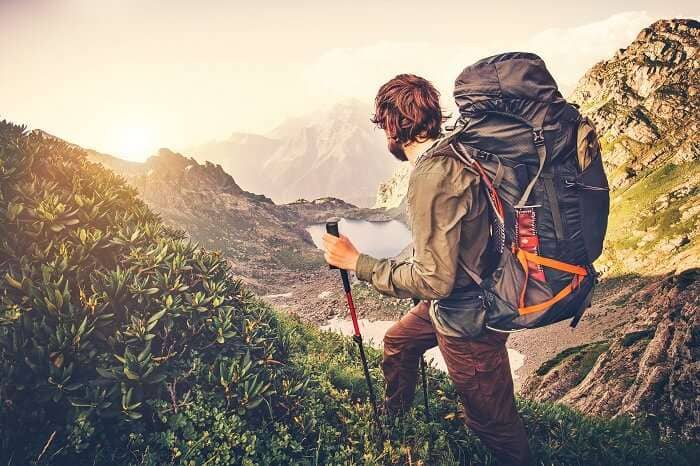
Chanderkhani Pass Trek is one of the best treks in Kullu Valley. Go to it and you will see the beautiful valley from up there. Some of the beautiful Himalayan peaks are also visible from here. You can experience the untouched magnificence of the valley and come across its diverse flora and fauna.
3. Skiing
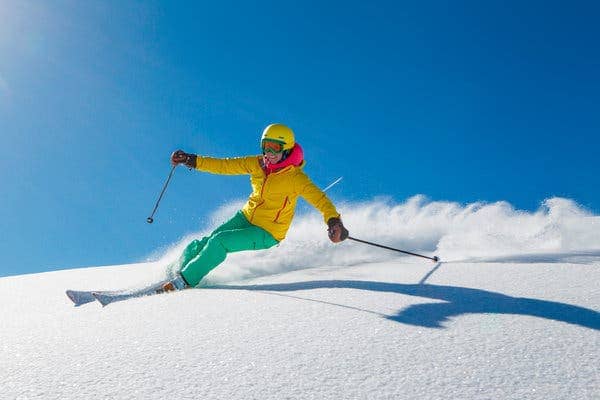
If your skiing experience is limited to watching people skiing on television, Kullu is the place for you. If you visit the valley in winters, from January to March, you will find fluffy white snow. The Solang Valley in Kullu is famous for skiing, and snowboarding.
4. Paragliding

To look down into the valley from a height can be one of the best experiences of your life. Paragliding allows you to fly like a bird and witness the endless beauty of the valley. Along Beas River, there are several spots that are perfect for Paragliding.
5. River Rafting
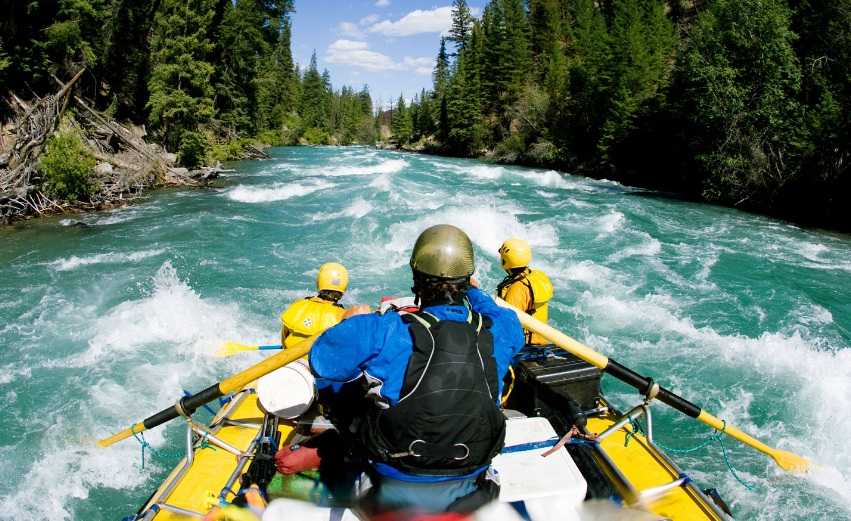
River Rafting is a one-of-a-kind experience and the mighty Beas river allows you to experience it. The rafting trip is about 3 kilometers, during which you can feel the chilled water playing with you, and the raft maneuvering the mighty flow of the beautiful Beas.
Taste Of Kullu Valley
The locals of Kullu eat food made of local ingredients. Earlier, maize and passy were the prime crops. The time is changing and with increasing tourism, the cuisine of Kullu is also witnessing a change. There are several restaurants in Kullu that offer Chinese, Continental, and North-East Indian food. But when you are in Kullu, taste the authentic cuisines of Kullu.
The regular food of a Kullu citizen includes Chapati, steamed rice, vegetable, and curd. During the festivals, the people cook Patrodu, Vada, Sattu, Kodra Roti, Bhatura, Madra (a dish prepared from curd), etc. They also make their local wines called Chakti and Lugri.
During the wedding, the food is cooked by Brahmins or Boti, as they are called. The cooking and serving are performed in the traditional manner, the food is cooked in brass utensils with lots of spices including cardamom, cloves, cinnamon, red chilies, pepper, etc. The food is served to the guests on leaf plates, who eat sitting cross-legged on the floor. This whole thing is called Dham.
It is unique to Kullu. When you come here, you can skip the hotel food, and relish in the taste of Kullu.
Wrapping Up
Kullu has so much more than its scenic views and trekking adventures. There is a spiritual fragrance in the air, every brick and stone screams historical significance, and the beautiful hills tell numerous stories of its mythological history. The temples of Kullu are famous for their architecture and their centuries-old pasts. It was powerful Deity Malana whose bucket fell from his hands as he tripped, and all the gods fell. No wonder it is called the “Valley of Gods”. This place not only has the Gods but their blessings, their energies, and you can share their peace in the valley.
People are also reading:



![Kullu Valley Kullu Valley [HP] | Location, History, Things To Do & Best Places](https://duniakagyan.com/wp-content/uploads/2024/01/Kullu-Valley-696x348-1.jpg)
